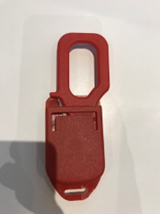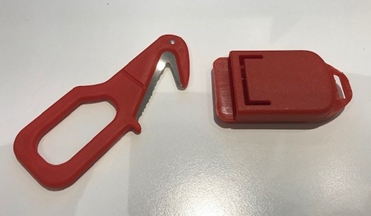Self-Harming and Suicidal Behaviour (including cutting, use and practices)
Scope of this chapter
Note: This chapter should be read in conjunction with the Multi-Agency Safeguarding Children Procedures for your area.
Relevant Regulations
The Positive Relationships Standard
The Protection of Children Standard
Scotland's Health and Social Care Standards 2018
Standards 1-5
Related guidance
Many children who come into the 'looked after' system have experienced significant trauma in their lives and are often highly vulnerable. It is likely that these children will sometimes have multiple and complex needs and significant behavioural and emotional difficulties, which can lead to acting in ways that place themselves in situations of high risk.
As part of Placement Planning, relevant information should be gathered and appropriate risk assessments put in place alongside relevant intervention strategies.
This should be regularly reviewed and monitored, through the Manager and the Multi Disciplinary team (attached to the service/home).
In situation where staff are involved with a child who is actively self-harming or suicidal, they should, in consultation with other members of the team and the MDT, ensure there is a plan to manage the effects such as distress or grief, that an incident of self-harm or suicide may cause other workers, family members and other children and young people in the setting.
All reasonable measures should be taken to reduce or prevent continuation of the behaviour.
This may include providing additional placement and clinical supervision, confiscation of materials that may be used to self harm or, as a last resort, use of physical intervention or calling for assistance from the Emergency Services.
If there is any suspicion that the child may be involved in self harming or any attempts of suicide, the social worker must be informed and a risk assessment undertaken (if it does not already exist with a view to deciding whether a strategy should be adopted to reduce or prevent the behaviour. That strategy should be included in the child's Placement Plan.
If necessary, additional external specialist advice or support should be sought.
Minor or non persistent self-harming should be notified to the Manager at the first opportunity; the Manager will inform the relevant social worker.
Serious or persistent self-harming, expression of thinking about or wanting to commit suicide or attempted suicide must be notified immediately to the Home's Manager. The Director of the MDT and/or the Head of Clinical Care must also be notified as soon as practically possible, along with the relevant Operations Manager. The relevant social worker must also be notified within 1 working day; the social worker should be consulted and consideration given to whether a Child Protection Referral should be made, if so see Safeguarding Children and Young People and Referring Safeguarding Concerns Procedure.
The Registered Manager should also be notified and consideration given to reporting of the incident as a Notifiable Event, see Notification of Serious Events Procedure.
Ligature: This is an item or a series of items that can be used to cause compression of airways, resulting in asphyxiation and death. The ligatures could be attached to ligature points i.e., from a window/door hinge. They also could be used manually by the individual. Examples of ligatures could include belts, laces, torn sheets, flex and wires. It is important to note that this list is not exhaustive and articles such as socks, handkerchiefs etc can be linked together to create a robust ligature
Equipment Specification and Maintenance
The ligatures cutters issued by the A Wilderness way Ltd are purpose specific items that must not be used for any other purpose than dealing with this type of emergency situation.
Ligature cutters offer improved safety and effectiveness for cutting a ligature from a person when compared to some traditional methods e.g. scissors.
Ligature cutters are specially designed items that offer an effective and safe method of cutting a ligature that is tied around a person’s body part, whether the ligature is tied solely to the person or attaches the person to any aspect of the environment e.g. a door handle.
The ligature cutter issued within the organisation has a “hooked” metal piece that is covered by a plastic covered handle. The plastic part is designed so that the outer edges are smooth and blunt and only the inner edge of the hook is sharp. The design of the plastic hook allows for the speedy and relatively safe insertion under the ligature, whilst also minimising the risk of secondary injury to the person or staff e.g. lacerations.


The effectiveness of the ligature cutter is largely dependent upon the sharpness of the blade. Therefore, ligature cutters must only be used to cut ligatures that require quick removal to reduce risk. If a ligature cutter is used for any other purpose, or to cut anything other than a ligature, this will negatively impact upon the sharpness of the blade and ultimately, might render the ligature cutter less effective in an emergency situation. Inappropriate use of ligature cutters may result in disciplinary action against staff.
The sharpness of the ligature cutter is so crucial that they are considered to be single-use items within the foundation, i.e. whenever a ligature cutter has been used to cut a ligature it must be immediately replaced with an unused or re-sharpened one.
Availability and Storage
A Wilderness Way Ltd acknowledges that incidents involving the tying of ligatures might sometimes occur despite preventative strategies and measures. Consequently, all areas, where risk assessment demonstrates there is a suitably high risk of self-ligature by a child, will be issued with ligature cutters. All A Wilderness Way homes hold a ligature cutter on site. The Registered/ home Manager must complete a risk assessment regarding the storage, monitoring and use of the device and ensure this is read and understood by all staff working within the home.
Ligature cutters are supplied in a plastic sheath and must only be removed from this during monitoring checks or when required for use. Locally, ligature cutters must be securely stored in areas that are only accessible to members of staff. However, it is important that all members of staff have quick and easy access to the ligature cutters. Therefore, appropriate storage places might include staff office (not inside medication cabinets only accessible to Daily Designated Medication Persons). Their storage must form part of routine management monitoring checks. As a minimum this should be weekly. However, where ligature cutters are in active circulation with the child expressing suicidal ideation or with a recent history of threats or attempts to ligature) these checks should be more frequent/ this may be daily or more often if there is a handover of ligature cutters between staff required to have them on their person.
Training
In all areas where ligature cutters are available, staff will receive information/training regarding the use of the ligature cutter from a suitably qualified and experienced instructor.
Training will include information relating to the physiological risks and effects of ligature as well as demonstration and practice of how to open, lock open, use, unlock, and fold away the ligature cutter.
After staff have received information/training relating to ligature cutters in general practice, they must familiarise themselves with their own local arrangements regarding access, storage, and replacement. This is an on-going personal responsibility throughout their employment within the organisation and is particularly important where staff have to work for periods in unfamiliar areas e.g., in a different house to their “usual” one.
Risk Assessment
Each area must have an appropriate environmental risk assessment in place. Assessments are carried out annually or in the event of a serious incident involving a ligature. They may also be reviewed in response to a “near miss” or a change to the child’s placement (new referral) or presenting behaviours.
The Use of Ligature Cutters in Practice
Whilst this guidance cannot replace the need for appropriate staff training relating to ligature cutters, it is important that staff remember the fundamental points for their effective use: Situations involving ligatures will generally fall into two main categories:
- “Suspended strangulation” – where a person has tied a ligature around their neck and attached this to a fixed point so that their body weight is supported by the ligature and its fixing; and
- “Ligature unsuspended” – where a ligature is tied around part of the body to restrict breathing or blood-flow. Outline advice for each of the above is provided below.
Suspended Strangulation (hanging):
In the event of suspended strangulation, it is important to elevate the person and to support their body weight wherever possible, at the earliest opportunity. If staff, make attempts to do this it is important that they should try to adopt and maintain the principles of manual handling to reduce the risk of injury to themselves during this high-risk manual handling activity.
As soon as the body weight is supported, or immediately if this is not possible for any reason, the ligature should be cut at a central point between the person’s neck and the suspension point so that there is a minimal interference with any potential investigation scene. The person should then be lowered to the floor.
If the ligature remains in place around the person’s neck (or other body part) it should be removed using a ligature cutter. Staff should make every effort to cut the ligature at a point that is distant from any knot that may be present because the ligature and any knot can provide significant forensic evidence to any police investigation.
In situations where the person resists the staff actions to remove the ligature, it might be appropriate for staff to restrict the person’s ability to struggle, especially where the struggling behaviour increases the risk(s) presented by the ligature, or by the use of the ligature cutter by staff. In such situations it is expected that staff will employ appropriate holding skills, in line with PRICE training, that are sensitive to the needs of the person and the safe removal of the ligature.
Ligature (unsuspended):
The ligature should be removed as described. If the person resists, then staff should act in accordance with the advice provided.
Instructions for After Use
Every incident involving the use of a ligature cutter is deemed serious and therefore constitutes a Notifiable Event (Regulation 40, The Children’s Homes (England) Regulations 2015) and will trigger the completion of a Green Form, Child Protection concern report. Staff should ensure that all actions identified on the Child Protection Flowchart are adhered to.
All self harming must be recorded in the home's Daily Log and relevant child's Daily Record (Mentor System/Clear care System).
An Incident Report must also be completed.
If First Aid is administered, details must be recorded.
The child's Placement Plan should be reviewed with a view to incorporating strategies to reduce or prevent future incidents.
Statutory Guidance and Government Non-Statutory Guidance
Suicide Prevention Strategy for England
Suicide Prevention: Resources and Guidance
Self-harm: Assessment, Management and Preventing Recurrence NICE Guidance
Useful Websites
The Mix - Essential Support for Under 25s
Last Updated: November 5, 2025
v54